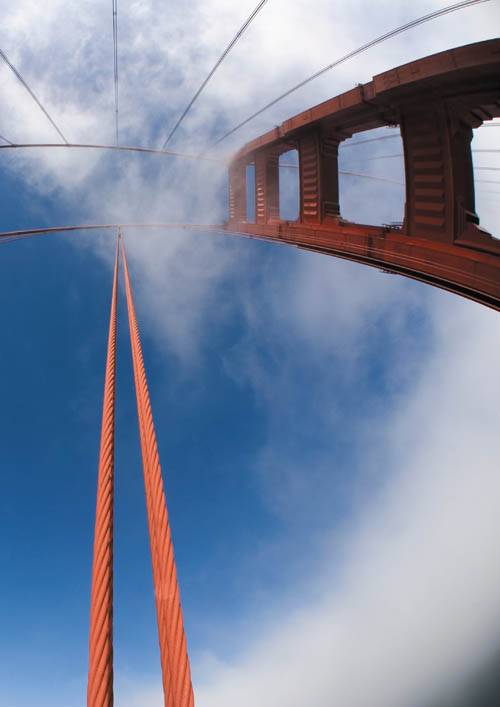Chapter 3. Image Editing Basics
| The Golden Gate Bridge as seen through a 10mm fisheye lens, August 2005. A fisheye lens yields an image with an extremely wide field of view and lots of spherical distortion.
Technically, all photography is "image editing." From the moment you compose a shot, you are editingselecting a particular window onto your subject, manipulating the sense of depth in that window by choosing a focal length and camera position, emphasizing certain tones and colors through exposure. In other words: though photographs may appear realistic, they are a far cry from a truly accurate representation of reality, and represent one person's choice about what to capture and display. Aside from these philosophical fine points, there are, of course, other, more direct edits and manipulations that the photographer can make. From choosing exposure, to shooting through filters, to dodging and burning, airbrushing, and compositing, photographers have long had the ability to manipulate images. Digital photographers have even more tools and options at their disposal, and unlike traditional darkroom techniques, digital tools don't require years of practice to master. When you choose to shoot raw, you get one or two new editing and correction tools that aren't available in most image editing programs. For the most part, though, raw converter applications provide the same types of tools that you find in any image editor, but with one important difference: when you edit in a raw converter, you have much more image data to work with, which means that you can perform edits that are much more refined. Before we jump into the specifics of Adobe's Camera Raw converter in Chapter 4, we'll cover the image editing basics that you need to understand to use your raw converter and to get the most out of your digital camera and your image editor. You're not going to learn how to perform wacky touch-ups in this chapter. We won't be covering compositing or cloning or airbrushing or any of those types of corrections. Instead, you'll learn about the fundamental tonal and color corrections that you'll apply to just about every image that you shoot. |
EAN: 2147483647
Pages: 76
